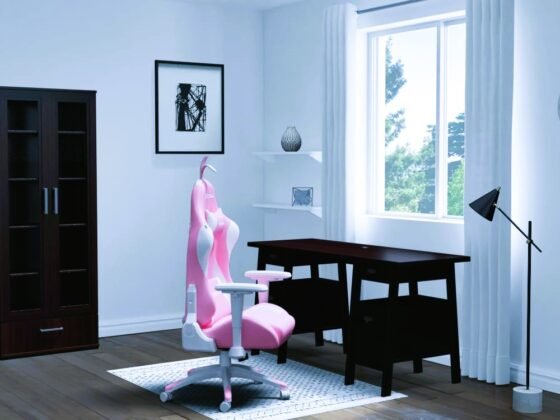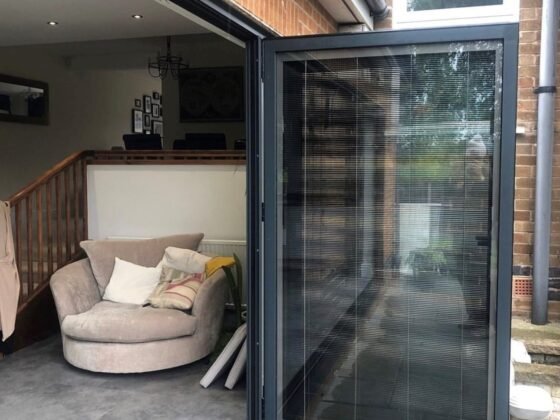Table of Contents Show
As we age, our homes, often our most cherished spaces, need to evolve with us. The concept of aging in place – staying in one’s own home safely, independently, and comfortably, regardless of age, income, or ability level – is gaining traction.
For technology professionals who appreciate the blend of functionality and aesthetics, renovating a home for this phase of life is not just about safety; it’s about creating a space that resonates with their lifestyle and future needs.
This comprehensive guide delves into the essential renovations for aging in place, focusing on accessibility and safety, without compromising on style.
Understanding the Need for Age-Friendly Renovations
Before diving into specific renovations, it’s crucial to understand why these changes are vital. As we age, our mobility, agility, and sensory perceptions often decline, making everyday tasks more challenging.
Age-friendly renovations are designed to counter these challenges, ensuring that homes remain safe, comfortable, and navigable. This approach is not just about anticipating physical limitations, but also about enhancing the quality of life.
Prioritizing Accessibility in Home Design
Accessibility is the cornerstone of any age-friendly home renovation. The goal is to create an environment where all areas are easily accessible, reducing the risk of falls and other accidents.
This includes wider doorways for wheelchair or walker access, no-step entries, and open floor plans that allow for easy movement. Lever-style door handles and easy-to-operate windows are small changes that can make a significant difference.
Rethinking the Bathroom for Safety and Comfort
The bathroom is one of the most hazardous rooms for seniors due to the risk of slips and falls. Key renovations should include installing grab bars in strategic locations, such as near the toilet and in the shower area.
Walk-in showers with non-slip tiles, shower seats, and handheld showerheads enhance both safety and comfort. Additionally, consider height-adjustable sinks and toilets to cater to varying needs.
Kitchen Modifications for Aging in Place
The kitchen, often the heart of the home, should also be adapted for aging in place. Lowering countertops and ensuring that appliances are at accessible heights can make a significant difference.
Installing pull-out shelves and lazy Susans in cabinets, along with touchless faucets, can reduce strain and improve usability. Lighting is another critical aspect, with a focus on bright, non-glare lights to aid in visibility.
Flooring Choices for Safety and Ease
Flooring plays a pivotal role in home safety for seniors. Slip-resistant flooring is a must, especially in areas like the bathroom and kitchen. Smooth, hard surfaces that allow for easy movement of walkers or wheelchairs are ideal. Additionally, minimizing transitions between different types of flooring can reduce tripping hazards.
Integrating Smart Home Technology for Enhanced Living
In an era where technology is integral to our daily lives, integrating smart home technology can significantly enhance the living experience for seniors.
Automated lighting, voice-activated devices, and remote-controlled window shades can provide convenience and safety. Smart thermostats and home security systems offer comfort and peace of mind, both for the residents and their loved ones.
The Role of Lighting in Age-Friendly Design
Proper lighting is essential in an age-friendly home. It’s not just about quantity but also the quality of light. Adequate lighting reduces the risk of falls and improves the ability to perform daily tasks.
Consider a mix of ambient, task, and accent lighting, with easy-to-use controls. Automated lighting systems that adjust based on the time of day can also be beneficial.
Creating a Maintenance-Free Home Exterior
The exterior of the home should also be considered in age-friendly renovations. Low-maintenance options like vinyl siding or metal roofing can reduce the need for regular upkeep. Landscaping should be designed with simplicity and safety in mind, with features like automatic sprinkler systems and perennial plants that require minimal care.
The Importance of a Supportive Community
While focusing on the home itself is crucial, the surrounding community plays a significant role in the quality of life for aging individuals. Access to healthcare, public transportation, and social activities are important considerations. Creating a network of support, whether through family, friends, or community services, is essential for a fulfilling life while aging in place.
Choosing the Right Professionals for Your Renovation
When undertaking such significant renovations, choosing the right professionals is crucial. For residents in Ottawa, Ottawa Professional Painters offers expertise in not just painting but also in understanding the nuances of creating age-friendly spaces. Their attention to detail and commitment to quality ensure that your home is not only safe and accessible but also aesthetically pleasing.
Leveraging Technology for Health Monitoring
In an age where technology is seamlessly integrated into our lives, leveraging it for health monitoring in an age-friendly home is a game-changer.
Innovations like wearable health devices, emergency response systems, and telemedicine services can significantly enhance the safety and well-being of seniors living independently.
These technologies allow for real-time health monitoring and quick response in emergencies, offering peace of mind to both the residents and their families.
Adapting Living Spaces for Multigenerational Use
As families increasingly embrace multigenerational living, adapting homes to suit all ages becomes essential. This involves creating flexible living spaces that can be easily modified to meet the changing needs of each family member.
Features like adjustable kitchen counters and modular furniture are beneficial. Additionally, incorporating elements like soundproofing and private spaces can maintain harmony in a multigenerational household.
Financial Planning for Age-Friendly Renovations
Undertaking age-friendly renovations can be a significant financial investment. It’s important to plan these renovations carefully, considering both current and future needs.
Exploring financing options, such as grants, loans, or reverse mortgages, can provide the necessary funds for these essential modifications. It’s also wise to consult with financial advisors to understand the long-term implications and benefits of investing in such renovations.
The Psychological Impact of Aging in Place
Aging in place goes beyond physical safety and comfort; it has a profound psychological impact. Living in a familiar environment can provide a sense of security, independence, and emotional well-being.
It’s important to design spaces that not only cater to physical needs but also to emotional and mental health. Incorporating personal touches, ensuring ample natural light, and providing areas for hobbies and socializing can greatly enhance the quality of life.
Conclusion: Embracing the Golden Years with Grace and Comfort
Renovating your home for aging in place is a thoughtful journey toward creating a safe, comfortable, and accessible living space. It’s about anticipating future needs without compromising on the quality of life.
By focusing on key areas like accessibility, safety, technology integration, and psychological well-being, you can transform your home into a sanctuary that supports and enriches your golden years.
Remember, aging is an inevitable part of life, but how we age is a choice. With the right modifications, your home can be a place of comfort, joy, and independence for many years to come.
In conclusion, as we embrace the inevitability of aging, preparing our homes to be safe, comfortable, and adaptable sanctuaries becomes not just a necessity but a journey towards a more secure and fulfilling future.
By integrating thoughtful design, cutting-edge technology, and a deep understanding of the unique needs that come with aging, we can create spaces that not only accommodate but also enrich our lives in the years to come.










